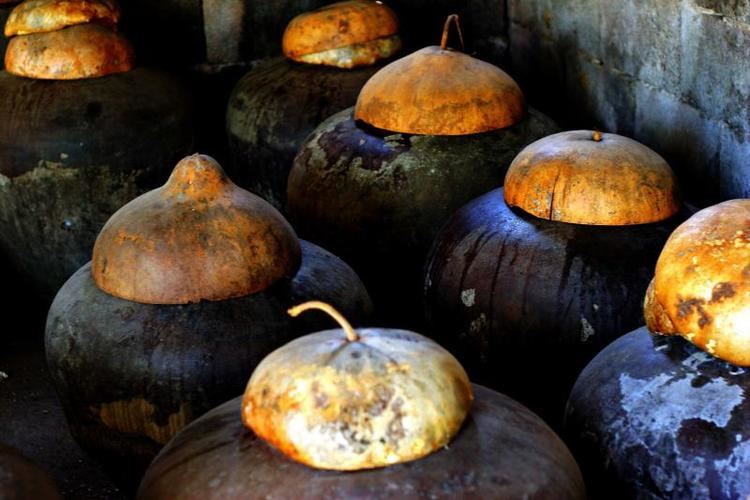 | ||
Similar Dinengdeng, Water, Kinilnat, Anchovy essence, Sugar | ||
Bagoong Terong or bagoong, and bugguong in the Ilocano language, is a common ingredient used in the Philippines and particularly in Northern Ilocano cuisine. It is made by salting and fermenting the bonnet mouth fish. This bagoong is coarser than Bagoong Monamon, and contains fragments of the salted and fermented fish [1]; they are similar in flavor. The odor is distinct and unique. Those who are unfamiliar with this condiment may find the smell repulsive. Bagoong is an essential ingredient in many curries and sauces. Fish sauce, common throughout Southeast Asian cuisine, is a by-product of the bagoong process.[2] Known in the Philippines as patis, it is distinguished as the clear refined layer floating on the thicker bagoong. Patis and bagoong can be interchanged in recipes, depending on personal taste and preference.
Bagoong is used as a flavor enhancing agent in the place of salt, soy sauce, or monosodium glutamate (MSG). It is used to make a fish stock, the base of many Ilocano dishes, such as pinakbet, dinengdeng, inabraw or as a dressing for cold steamed greens in the dish kinilnat (ensalada), like ferns, bitter melon leaves, or sweet potato leaves. Bagoong is used as a condiment, or dipping sauce, for chicharon, whole fried fish, green and ripe mangoes, or hard boiled eggs.
It is similar in taste and odor to anchovy paste.
